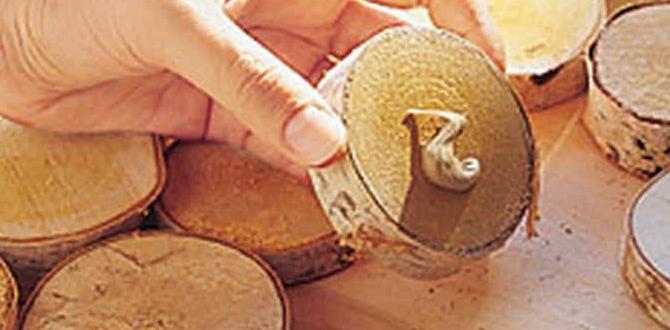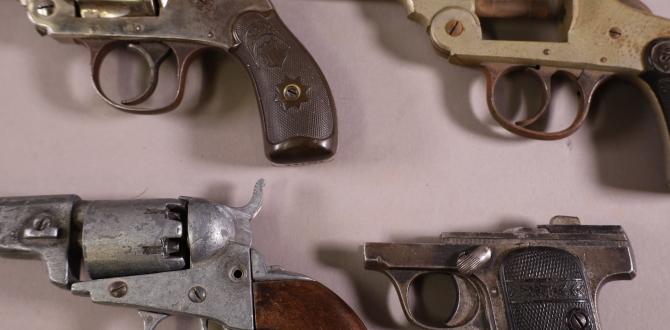Nail gun performance optimization tips are crucial for ensuring your tool drives nails consistently and powerfully every time, preventing jams and ensuring project success. Follow these essential tips to keep your nail gun in top shape for any DIY task.
Hey there, DIY friends! Jack Shaffer here, your go-to guy for all things tools and woodworking. Ever feel like your nail gun is a bit… sluggish? Maybe it’s not driving nails flush, or you’re experiencing more jams than you’d like. It’s a common hiccup, but don’t worry! Getting your nailer to perform at its best doesn’t require a degree in engineering. With a few simple, proven tips, you can dramatically improve your nail gun’s power, consistency, and reliability. We’re going to break down exactly how to keep your nailer humming along perfectly, ensuring your projects go smoother and look fantastic. Let’s dive in and unlock your nail gun’s full potential!
In this guide, we’ll cover everything from the basics of air pressure and maintenance to choosing the right nails and understanding your specific nail gun’s needs. You’ll learn practical, easy-to-implement strategies that will make a real difference, whether you’re building a fence, crafting furniture, or just hanging trim. Get ready to feel more confident and capable with your nail gun!
Table of Contents
Why Nail Gun Performance Matters
A well-performing nail gun isn’t just about speed; it’s about precision, safety, and the overall quality of your work. When your nailer is firing on all cylinders, you get consistent drives, fewer damaged workpieces, and a much more enjoyable DIY experience. Think of it like a sharp chisel or a perfectly balanced hammer – when the tool works with you, your projects shine.
On the flip side, a poorly performing nail gun can lead to a cascade of frustrating problems. Nails might not sink deep enough, leaving them proud and requiring extra work to fix. They could bend or misfire, creating jams that halt your progress and can even damage the tool itself. This can turn a fun weekend project into a test of patience. Ensuring optimal performance means you can trust your tool to do its job, letting you focus on the creative and enjoyable aspects of your project.
Essential Nail Gun Performance Optimization Tips
Let’s get down to the nitty-gritty. These tips are designed to be straightforward and effective, no matter if you’re a seasoned pro or just starting out. We’ve organized them to cover the most common areas where performance issues arise.
1. Master Your Air Supply: Pressure & Volume
For pneumatic nail guns, the air supply is everything. It’s the engine that drives your tool. Too little air, and your nails won’t penetrate. Too much, and you risk damaging your workpiece or the nail gun itself.
Understanding PSI (Pounds per Square Inch)
- Recommended Pressure: Always check your nail gun’s manual. Most framing nailers operate between 70-120 PSI, while finish nailers might be closer to 70-100 PSI.
- Testing Pressure: Use a reliable pressure gauge connected to your air hose near the nailer. Adjust your compressor’s regulator accordingly.
- Consistency: Ensure your compressor can maintain the required pressure throughout your nailing sequence. If it struggles, you might need a larger compressor or a break between nail bursts.
Air Volume (CFM – Cubic Feet per Minute)
PSI is important, but so is the amount of air your compressor can deliver. A nail gun needs a consistent flow of air, especially during rapid firing. Small compressors might have a high PSI rating but can’t deliver enough CFM, leading to reduced power as you use the tool.
Tip: Match your compressor’s CFM rating to your nail gun’s CFM requirement. A good rule of thumb is to have a compressor with a CFM rating at least 1.5 times higher than the tool’s requirement at 90 PSI.
Looking for more on compressor basics? The Family Handyman has a great breakdown of compressor types and what to look for.
2. Keep It Clean: The Importance of Maintenance
A clean nail gun is a happy nail gun! Dirt, dust, and debris can interfere with moving parts, seals, and the firing mechanism. Regular cleaning will prevent jams and ensure smooth operation.
Basic Cleaning Steps
- Disconnect Air: Always disconnect the air supply before any maintenance.
- Wipe Down Exterior: Use a clean, dry cloth to remove dust and grime from the outside of the nailer.
- Lubricate Moving Parts: Add a few drops of specialized pneumatic tool oil into the air inlet fitting. Cycle the tool a few times to distribute the oil. Never use WD-40 for this, as it can dry out seals.
- Clean the Magazine: The magazine where the nails are stored can get dirty. Wipe it clean internally with a dry cloth. For stubborn debris, a soft brush can help.
- Check Seals and O-rings: Periodically inspect rubber seals and O-rings for wear or damage. Replace any that look cracked or flattened.
Deep Cleaning (When Needed)
For more significant issues or after heavy use (especially in dusty environments), a deeper clean might be necessary. This usually involves disassembling parts of the nailer, like the nose piece or driver assembly. Refer to your tool’s manual for specific disassembly and reassembly instructions. Patience is key here!
3. Nail Selection: The Right Size and Type
Using the wrong nails is a surefire way to cause jams and poor performance. Nails are designed for specific nail gun types and applications.
Matching Nails to Your Nailer
- Gauge: Thinner nails (higher gauge number, e.g., 18-gauge brad nails) are for delicate work, while thicker nails (lower gauge number, e.g., 8-gauge framing nails) are for structural applications.
- Length: Ensure the nail length is appropriate for the thickness of your materials and the depth you need to penetrate.
- Head Style: Brad nails have small, minimal heads, while finish nails have slightly larger heads, and framing nails have substantial heads for maximum holding power.
- Coating: Some nails have coatings (like vinyl or resin) that help them drive more easily or offer corrosion resistance.
Common Nailer Types and Their Nails:
| Nailer Type | Common Nail Gauge | Typical Use |
|---|---|---|
| Brad Nailer | 18 Gauge | Trim, molding, light repairs, crafts |
| Finish Nailer (e.g., 15-gauge) | 15-16 Gauge | Wainscoting, crown molding, door and window casings |
| Framing Nailer | 8-12 Gauge | House framing, decks, fences, structural work |
| Roofing Nailer | 1-1/4″ Head Diameter | Shingles, sheathing |
| Siding Nailer | 15-17 Gauge (often collated at an angle) | Siding installation |
Pro Tip: Always use the nails recommended by your nail gun manufacturer. Using incompatible nails is a common cause of driving issues and jams.
4. Depth Adjustment: Dialing It In
Most modern nail guns have an adjustable depth setting. This allows you to control how deep the nail is driven into the material. Getting this right is crucial for a clean finish and solid holding power.
How to Adjust Depth
This is usually a dial or lever located near the nose of the gun. Turning it one way will drive nails deeper, and turning it the other will make them sit more flush or proud. The exact mechanism varies by model, so consult your manual.
Tips for Perfect Depth
- Test on Scrap: Before starting your actual project, take a few test shots on a piece of scrap material identical to your project wood.
- Adjust Incrementally: Make small adjustments to the depth setting and test again until you achieve the desired result.
- Consider Material Hardness: Softer woods might require a slightly less aggressive depth setting, while hardwoods may need more power to drive nails flush.
If you’re struggling with depth consistency and your nailer is correctly set up, it might be time to check the driver blade and bumper system for wear.
5. Keep the Nose Clean and Clear
The nose of your nail gun, where the nail is driven out, is a critical component. Debris, wood dust, or even bent nails can get stuck here, leading to misfires and jams.
Clearing Jams
- Safety First: ALWAYS disconnect the air supply and remove the battery (if applicable) before attempting to clear a jam.
- Use the Right Tool: Many nailers come with a small tool for clearing jams. Pliers can also be helpful, but be gentle to avoid damaging the nose.
- Access the Jam: Depending on your nailer, you might need to open a latch or remove a cover to access the jam.
- Gentle Removal: Carefully pull or push the obstruction out without forcing it, which could damage the driver or the nose assembly.
- Regular Cleaning: As mentioned, keep the nose area clean. A quick wipe down after use is a good habit.
- Inspect for Damage: Look for any bent metal or worn-out parts around the nose.
- Full Charge: Always start your work session with a fully charged battery.
- Proper Storage: Store batteries in a cool, dry place, away from extreme temperatures. Avoid leaving them in a hot car or direct sunlight.
- Charge Cycles: Follow the manufacturer’s recommendations for charging. Overcharging can degrade battery life over time, though many modern chargers are smart enough to prevent this.
- Inspect Battery Terminals: Ensure the battery terminals and the corresponding contacts on the nailer are clean and free of corrosion.
- Inspect for Leaks: Listen for hissing sounds and visually inspect your air hose for cracks, kinks, or punctures. Even small leaks can reduce efficiency.
- Use the Right Hose: Ensure your hose has the correct diameter to deliver sufficient CFM for your nailer. A general-purpose 1/4-inch hose might be too small for high-demand tools. Consult your nailer’s manual.
- Coupling Integrity: The quick-disconnect couplings where the hose connects to the nailer and compressor should seal tightly. Replace any worn or damaged fittings.
- Driver Blade: Look for nicks, bends, or excessive wear on the tip of the driver blade. A damaged blade can’t strike the nail head squarely.
- Bumper: The bumper is usually a piece of polymer or rubber at the top of the driver assembly. If it’s cracked, compressed, or worn away, it won’t absorb shock properly, and the driver may not retract correctly, leading to subsequent jams.
- Pros: Generally powerful, reliable, and longer-lasting tools. Consistent performance when air supply is maintained.
- Cons: Require an air compressor, hose, and maintaining air pressure. Can be louder.
- Optimization: Focus on air pressure, volume, and clean air delivery (as discussed above).
- Pros: Highly portable, no cords or hoses. Convenient for various locations.
- Cons: Performance can be affected by battery charge and tool motor. May have less sheer power than pneumatics for very heavy tasks.
- Optimization: Battery health, motor maintenance (follow manufacturer guidelines), and ensuring sufficient power for the task.
- Pros: Very portable, powerful, and compact. Good for remote jobs.
- Cons: Require fuel cells and batteries. Sooter and can have a distinct smell. Performance can vary with temperature.
- Optimization: Use fresh fuel cells, ensure battery is charged, and keep the combustion area clean as per the manual.
- Possible Causes: Low air pressure, insufficient CFM, worn driver blade, depth adjustment set too shallow, weak battery (cordless).
- Solutions: Check/increase air pressure, ensure compressor has adequate CFM and is running, inspect/replace driver blade, adjust depth setting, charge/replace battery.
- Possible Causes: Wrong nail type/size, hitting knots or hard spots in wood, bent driver blade, improper air pressure (too high or too low).
- Solutions: Verify you’re using the correct nails for your gun and material, try a different nailing location, inspect driver blade, check/adjust regulated air pressure.
- Possible Causes: Debris in magazine or nose, wrong nail collation (angle, size), worn internal parts, safety contact malfunctioning.
- Solutions: Clean magazine and nose thoroughly, ensure you’re using the correct nails, inspect internal components and for wear, test safety contact.
- Possible Causes: Low air pressure, faulty O-rings or seals, weak battery,
Preventing Jams at the Nose
6. Battery and Charging (Cordless Nailers)
For cordless nailers, battery health is paramount. A weak or poorly charged battery will significantly impact performance, leading to slower firing, weaker drives, and premature power loss.
Battery Best Practices
A dying battery can trick you into thinking the nailer itself is underperforming. If you’re experiencing issues, try a fully charged or a different battery if available.
7. Hose and Couplings (Pneumatic Nailers)
For pneumatic tools, the entire air delivery system matters – from the compressor to the nail gun. Leaky hoses or faulty couplings can rob your nailer of vital air pressure and volume.
Hose Maintenance
A good quality air coupler system from a reputable brand like Milton (known for their D-Style and A-Style couplers) can make a significant difference in maintaining consistent air pressure.
8. Driver Blade and Bumper Inspection
The driver blade is the part that actually strikes the nail head, and the bumper absorbs the shock. Wear and tear in these components can affect nail seating and driving force.
When to Inspect
If you notice nails are consistently not driving flush, or if the shots feel “mushy” even with proper air pressure, it’s time to check these parts.
What to Look For
Replacement parts are often available from the manufacturer. If you’re not comfortable with disassembly, a tool repair shop can help.
9. Consider the Power Source: Gas vs. Pneumatic vs. Electric
The source of power for your nail gun can influence its performance characteristics. Understanding the differences helps in troubleshooting and optimization.
Pneumatic (Air) Nailers
Cordless Electric (Battery) Nailers
Gas-Powered Nailers
For optimal performance regardless of power source, always use the rated accessories (batteries, fuel cells) as recommended by the manufacturer.
10. Proper Firing Technique
How you use the nail gun matters too! Simple techniques can improve accuracy and prevent double-fires or misfires.
Sequential vs. Contact Fire
Learn if your nailer has a selectable trigger mode (sequential fire for precision, contact fire for speed) and use it appropriately. Sequential fire involves pressing the nose to the surface first, then pulling the trigger. Contact fire involves pulling the trigger first, then bumping the nose to fire.
Holding the Nailer
Always keep the nail gun pressed firmly against the surface before firing. This ensures the safety contact (the tip protruding from the nose) is engaged and the nail is properly aligned.
Avoid “Air Firing” Where Possible
Air firing (firing without the nose against the material) can put unnecessary wear on the driver blade and internal mechanisms. It’s best to avoid this unless absolutely necessary.
Troubleshooting Common Performance Issues
Sometimes, despite your best efforts, you might encounter specific problems. Here’s a quick troubleshooting guide for common nail gun performance hiccups.





